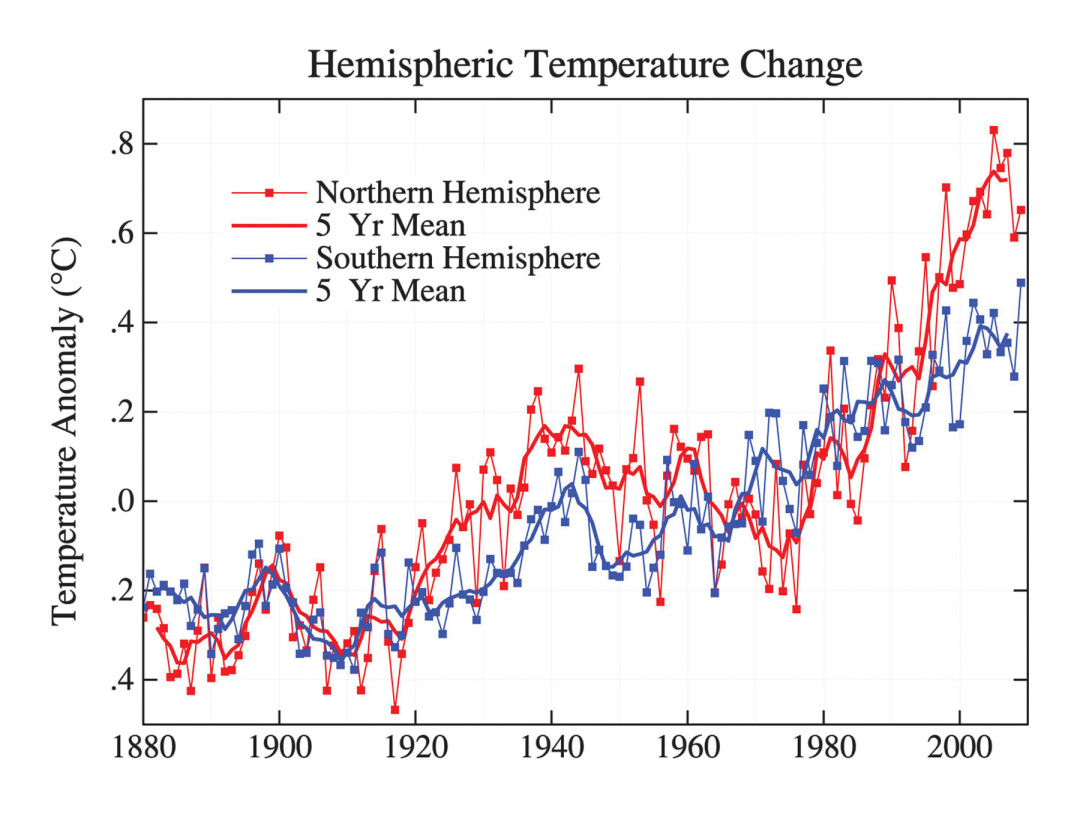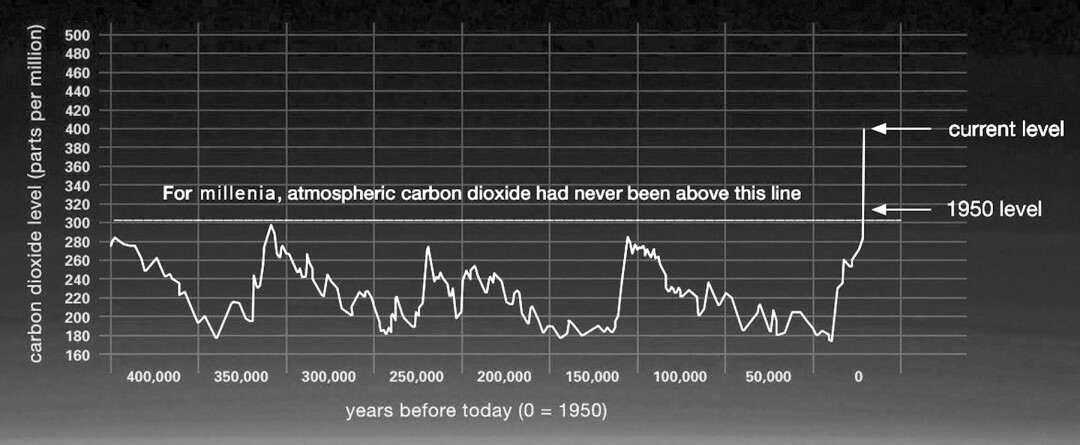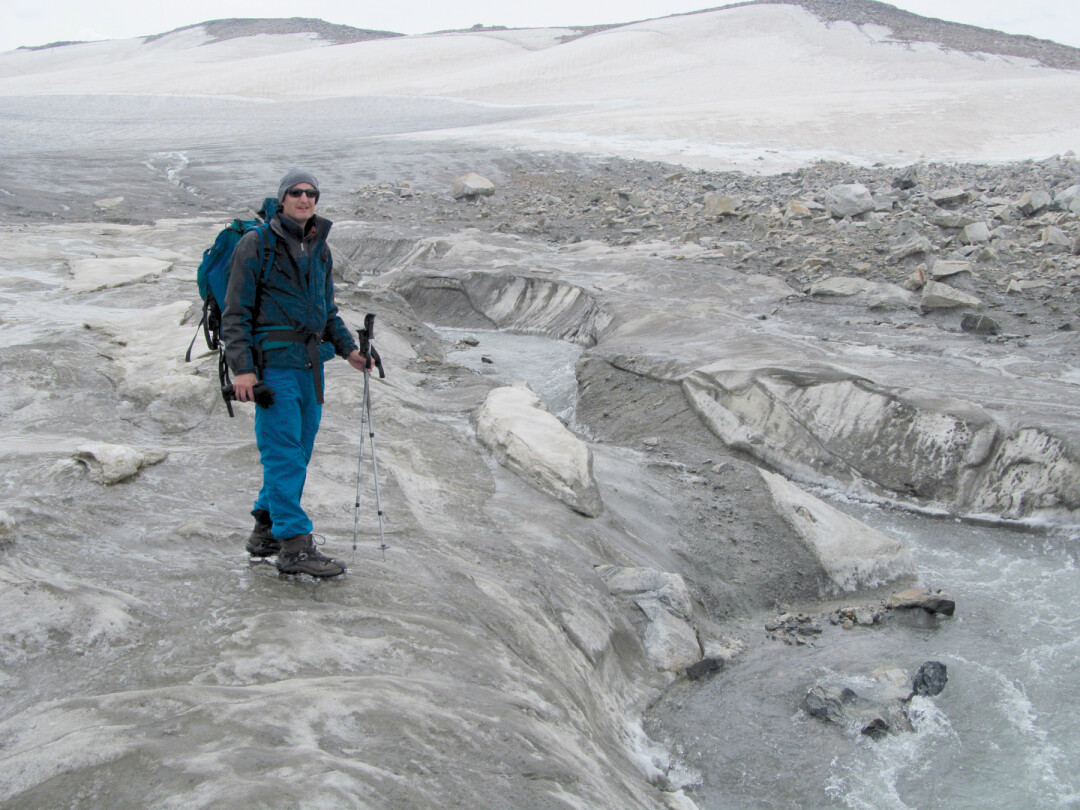A New Geologic Epoch On The Horizon
Daniel Smith | Saturday Apr. 1st, 2017
The Earth’s climate has changed often since the Earth formed some 4.5 Billion years ago. Indeed, our northern Rocky Mountain location has, at various times in Earth history, been a humid tropical paradise, a Sahara-like desert, and, at other times, a year-round, frigid winterscape. Does that mean that the global warming we are seeing today is simply a normal trend of changing climate? Let’s explore the question.
Cyclical Climate Change
Paleoclimate research is the study of past climates and is critical to understanding how our climate is changing today. The study of deep ocean and terrestrial lake sediment cores, ice cores from continental and alpine glaciers, pollen studies, geochemical analyses, and a host of other analytical tools help to determine past climates and atmospheric composition. It is clear that the climate changes, but what causes it and how fast does climate change occur?
A complex cycle of the Earth’s orbit around the sun predicting the tilt of the Earth and the shape and timing of the orbit, known as the Milankovich cycle, has roughly predicted natural cycles of glaciation and interglacial or warming periods over millions of years. The tilt of the Earth and the distance from the sun has a great influence on solar insolation, or radiation affecting the Earth’s surface. Other factors affect the glacial cycle as well, but the Milankovich cycle is considered a “forcing” dynamic on glacial and interglacial periods.
At the end of the Pleistocene glaciation, 15,000 to 12,000 years ago, temperatures rose gradually over several thousand years to a maximum (approximately 7500 to 4500 years ago) known as the Holocene Climatic Optimum or Altithermal period. The average temperature was a mere 1-2 degrees C higher than today (1.8 to 3.6 F). During the Altithermal, nearly all the lakes in the Great Basin dried up. The region of the northern Rockies was a desert. Paleoindians who lived in our area at that time moved high in the mountains to survive.
Since the Holocene Maximum, a cooling period has occurred leading to our current North American climate. The Milankovich cycle would predict a continued cooling due to the orbital relationship with the sun. However, a sudden spike in global average temperature has been recorded since the beginning of the industrial revolution. If the temperature continues to rise, we may be heading toward another altithermal-like period. The difference is that the Holocene maximum temperature rise developed over thousands of years, but our modern-day spike in global average temperature is, alarmingly, occurring over decades.
So what is causing this documented rapid increase in average global temperature? The vast majority of world scientists believe it is human-caused from the increase of greenhouse gasses in the atmosphere from the burning of fossil fuels since the beginning of the industrial revolution, exacerbated by the decimation of the world’s rainforests.
Local Evidence of Climate Change
The Wind River Range, just southeast of Yellowstone has the “largest concentration of glacial mass in the Rocky Mountains within the contiguous USA,” says Greg Vandeberg, a climate scientist from the University of North Dakota in Grand Forks.
Vandeberg received his Masters Degree in Earth Science from Montana State University, Bozeman and a PhD from Kansas State University, and is now head of the Deprtment of Geographic Information Science at the University of North Dakota in Grand Forks. Greg’s recent research has focused on the recession of high mountain glaciers in the Rocky mountains. In collaboration with Jeff VanLooy, an assistant professor with the Department of Earth System Science and Policy at UND, he is conducting cutting-edge research into the condition of high-alpine glaciers in the Wind River Range of Wyoming.
In the summers of 2012 and 2014, Vandeberg and VanLooy (along with some University of Utah researchers) traveled high into the northern Wind River Range to study the Continental Glacier, a massive 2.5 square kilometer ice mass draining the northern Wind River mountains into the Missouri River drainage. Along with students and an unweildly amount of equipment including heavy lead batteries, a solar-powered recharger and a variety of analytical devices, the team took an 8-horse pack train up to base camp at 10,000 feet. From there, the team became their own pack animals carrying 65-70 lb backpacks to camp 2 at 11,000 feet, where they spent another day acclimating to the altitude. Continental Glacier camp would be another 1,300 feet above in the thinning alpine air at 12,300 feet. Life high in the Wind Rivers is tenuous at best. “In a 24 hour period, at 12,300 feet in August,” Vandeberg mused, “the weather is at various times windy, snowy, sunny and freezes every night.”
Aerial photographs from 1966 were used to establish a baseline extent and thickness of the glacier. At that time, the world’s population was 3.4 billion and the population of the U.S. was 195 million. Current population of the U.S. is over 326 million and the population of the Earth is nearing 7.5 billion, over double the 1966 figure.
The team’s mission was to create a 3-dimensional model of the glacier using ice-penetrating radar and GPS, then calculate the difference in volume from 1966 to present. They also measured the glacial meltwater discharge and sampled the geochemistry of snow verses ice melt. Their results are telling.
Their findings indicate that Continental Glacier has thinned almost 14 meters from 1966 to 2012, or more than the height of a four-story building, and they predict that 43% of the glacier will melt out over the next hundred years. That may seem like a long time when considering the urgency of global warming, but Wind River glaciers are exceptionally high at 11,500 ft to 13,775 ft elevation. Lower elevation glaciers are melting much more rapidly and disappearing as annual temperatures increase. Vandeberg cites other studies in the area based on ice core data, which indicate that average annual temperature at 13,000 ft elevation increased by 3.5 degrees C (6.3 degrees F) between 1960 and the mid-90s.
The other data collected by the UND team related to stream flow volumes from the melting glacier, and the geochemical composition of the glacial water verses the snowmelt. In a dry year, 2012, meltwater from Continental Glacier contributed more than 70% of the late summer stream flow of Torrey Creek draining the glacier. In a wet year, 2014, the glacier contributed 17%.
“Our results, along with many other studies, are very concerning,” said Vandeberg, “Once these glaciers are melted, the extra water flow will not be available to augment local stream flow. This will cause great harm to local fisheries and to irrigation water resources.”
Just northwest of the Wind Rivers, Yellowstone is also experiencing climate change like we’ve never seen. The growing season in Yellowstone, the time between the last freeze of Spring and the first freeze of Fall, has increased around 30 days in the last 50 years. The northeast entrance is experiencing 80 more days per year above freezing and 30 fewer days with snow on the ground than in the 1960s.
World Climate is Changing Before Our Eyes
Today we are seeing alpine glaciers melt, and continental ice sheets break up at unprecedented rates across the world. The Arctic tundra is melting and releasing carbon dioxide and methane (another powerful greenhouse gas) into the atmosphere.Growing seasons are lengthening in northern climes.
Already in 2017, Australia has had the most record high days in a single year ever, and a new record for the hottest day in February, 109.2 F, was reached on February 10th. Last summer India experienced the hottest day ever, at 123.8 F, and in adjacent Pakistan, temperatures topped out at 124.7 F. In 2015, nearly 1,300 people died in the Pakistani heatwave of that summer. The Earth’s oceans are warming, causing traditional fishing grounds to migrate to cooler areas; and becoming more acidic, causing massive coral bleaching around the world.
The idea, posed from certain camps, that since we see huge snowfalls in various locations, global warming can’t be happening, shows an ignorance of science. A warming climate will naturally accelerate evaporation, adding moisture to the atmosphere, and may encourage large snow events. The point is, you can’t take isolated events and call them evidence for or against climate change. That is what long-term scientific studies are for, and science has shown conclusively that humans are accelerating global warming.
Our Responsibility
It’s been a difficult year for climate scientists. Threats of funding cutbacks and political savaging of the work of a generation of scientists and analytical systems have rocked the community. These people are the brains of our planet. How foolish to disregard their work, work that is in the best interest of everyone.
In the recent United Nations Paris Climate Agreement, the long-term goal is to keep the global average temperature from rising above 1.5 degrees C. That is approximately the high temperature during the Holocene Maximum when the Northwest became a desert and Great Basin lakes dried up. To keep the Earth’s average temperature from rising above this “tipping point” will take a concerted effort of all the nations of the world. There are signs that our current administration would like to withdraw from the Paris climate deal. The United States should be a thoughtful leader in pursuing a solution to such a dire problem, especially when the majority of THE brains of our species are telling us so. In modern times, as Earth’s population hurtles toward 8 billion, we don’t really know what the consequences might be when we reach that threshold. Do we really want to roll the dice?
The bottom line is that the 20 warmest years in recorded history have occurred since 1981, and the 10 warmest have all occurred in the last 12 years. 2016 was recently declared the hottest year ever recorded!
NOTE TO CONCERNED CITIZENS OF EARTH:
Recently, geologists and other earth scientists are considering adding a new geologic epoch, “relating to or denoting the current geological age, viewed as the period during which human activity has been the dominant influence on climate and the environment.” The proposed new epoch has been coined the Anthropocene. Humans now control the fate of not only our own species, but all species on our planet.
Our state and national representatives who don’t believe in science and deny the overwhelming evidence that humans are causing a rapid increase in greenhouse emissions and average global temperature are putting us all at risk. It is up to us as citizens of the Earth to deny power to those who would put our planet and its people at risk. Please think before you vote, and vote for representatives who put people before profit!
| Tweet |
